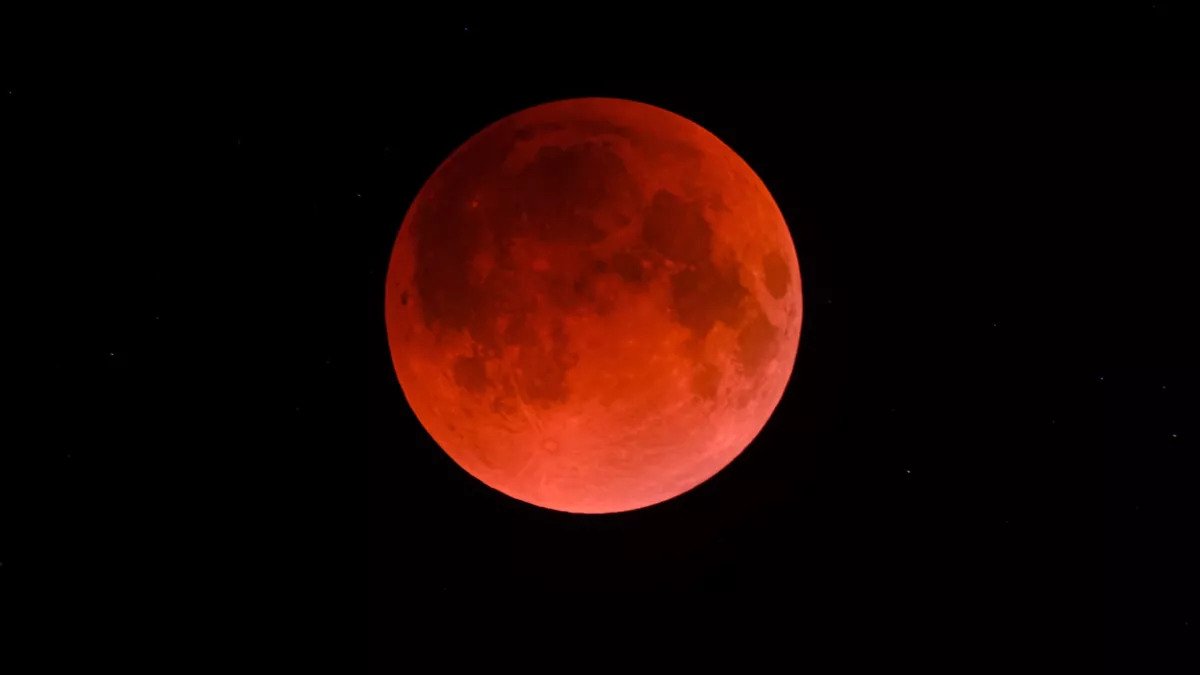Volcanic eruptions cause the Moon to darken during eclipses. Scientists studied medieval records to establish when there was a lot of ash in the Earth’s atmosphere and how it affected the climate on the planet.

Lunar eclipses and volcanoes
A group of researchers led by Sébastien Guillet from the University of Geneva studied medieval chronicles in search of information about lunar eclipses. They were looking for messages about situations when its color became not just red, but very dark.
A lunar eclipse occurs when the shadow of a planet falls on our moon. A completely dark color means that there is a lot of dust in the earth’s atmosphere. This usually happens after large-scale volcanic eruptions. This is well known from astronomical observations in 1883, 1963, 1982 and 1991, when the volcanoes Krakatau, Agung, El Chichon and Pinatubo erupted.
A large volcano is capable of raising ash into the atmosphere to a height of 6 to 30 km. This curtain blocks not only the light that is reflected from the Moon, but also the sunlight during the day. As a result, the temperature on earth may decrease for several months.
Volcanoes and climate
The question of how volcanoes affect the climate has long been of interest to scientists. A lot is already known about the short-term impact of large eruptions and it may well be catastrophic. For example, when the Tambor explosion occurred in 1815, the ash covered the sky for several months and the following year, snowstorms were observed in England even in June.
But scientists go further. At the end of the Middle Ages, between 1100 and 1300, a long global cooling occurred in Europe, the so-called Little Ice Age. There was a theory that it could be caused by several large volcanic eruptions that occurred one after the other.
However, until now, scientists have relied in their studies of that fact on rather unreliable indications, such as changes in Arctic ice cores or rings of old trees. The complexity of atmospheric circulation makes these indications extremely inaccurate.
Study of medieval records
That is why researchers turned to medieval records of lunar eclipses. Even if their authors indicated the date inaccurately, it can always be calculated based on modern astronomical observations.
In total, the researchers analyzed 180 European, 10 Middle Eastern and 199 East Asian documents. Some of them are written in languages that are not currently in use. They contained information about 51, 7 and 61 eclipses, respectively.
Christian records turned out to be the most informative at the same time. Perhaps this is due to the fact that in this religion, the change in the color of the Moon is often associated with the onset of the Apocalypse. Anyway, the researchers were able to determine the color of the Moon in 36 cases of an eclipse.
Lunar eclipses and climate in the Middle Ages
By studying the color and brightness of total lunar eclipses in ancient texts, researchers were able to assess the impact of volcanic eruptions on the stratosphere and, consequently, on the global climate. The findings of the research team showed that they could estimate the year and in some cases even the month of the volcanic eruption.
Scientists compared these historical findings with modern studies of the time interval between eruptions and their impact on the atmosphere and climate. They linked five dark and two red lunar eclipses with large eruptions during the High Medieval Period. Dark lunar eclipses can be observed for three to twenty months after the eruption.
Then the researchers compared these estimates with data on tree rings in the Northern Hemisphere. Where extremely cold summers are associated with a decrease in wood formation. They found that five of these eruptions in 1110, 1172, 1229, 1258 and 1276 AD had a strong effect on the climate, while the remaining eruptions seemed to have less effect.
In general, the researchers note that the new technique is not perfect. But thanks to it, they were still able to learn much more about how volcanoes affected climate change in the past. Perhaps in the future, scientists will be able to determine what caused the Little Ice Age.
According to www.space.com
Follow us on Twitter to get the most interesting space news in time
https://twitter.com/ust_magazine

